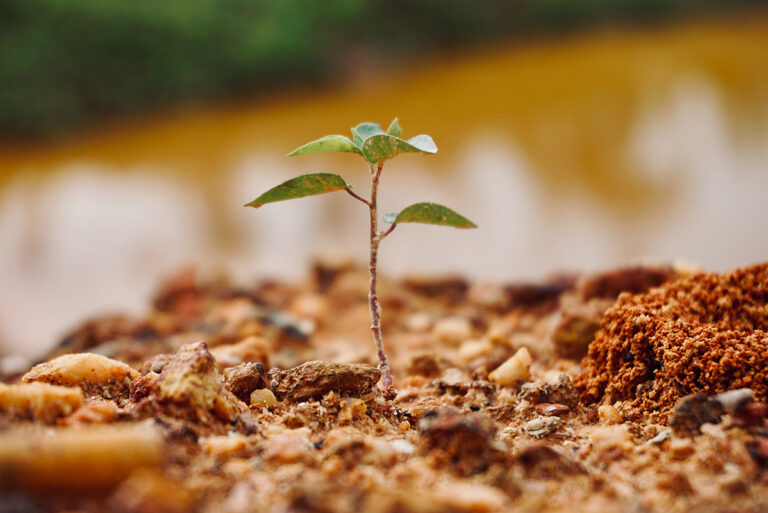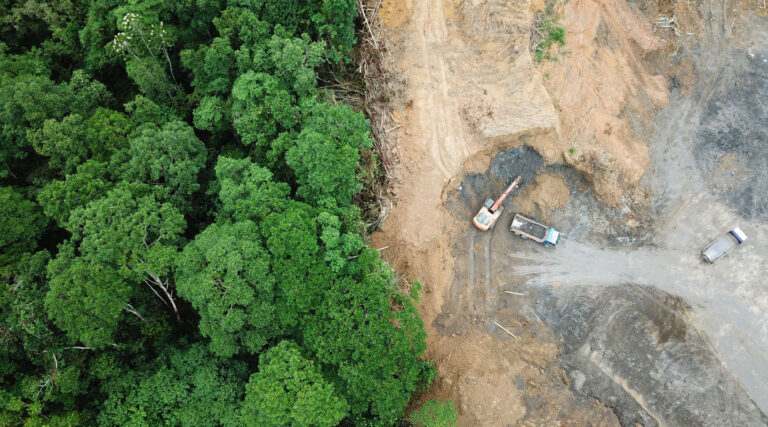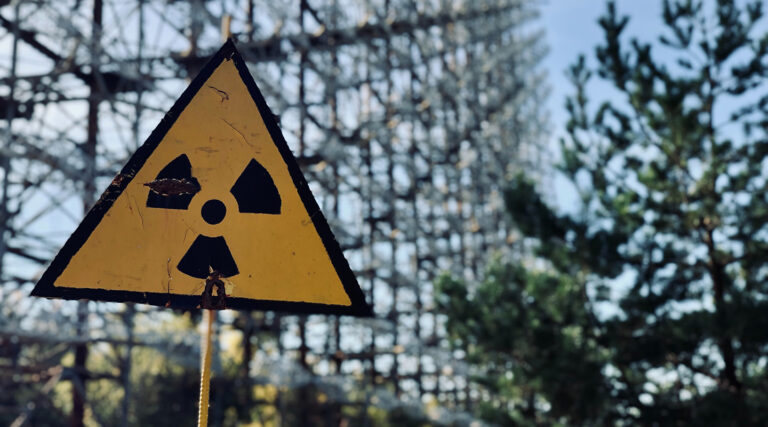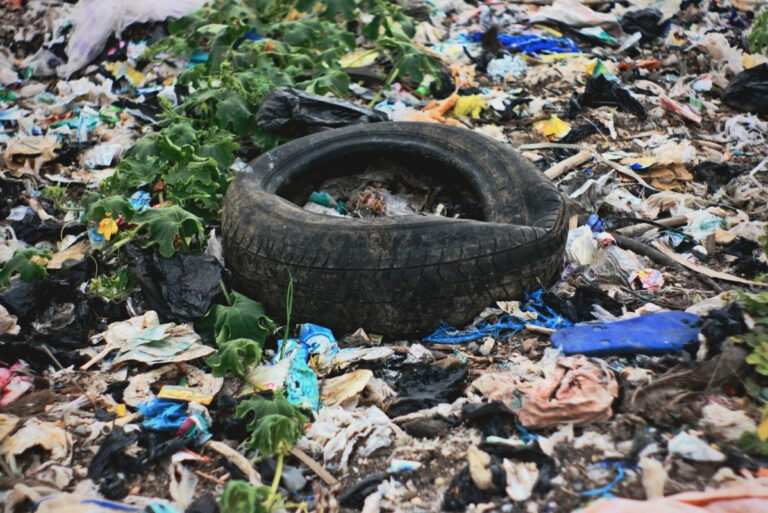Earth has lost one-third of its forests, and this tree cover continues to dwindle: it’s estimated that 10 million hectares of forest are cut down each year. But how, and why?
Human activity is the main culprit of these significant and devastating losses. Deforestation is the purposeful clearing of forested land. Throughout history and into modern times, forests have been cleared to make space for agricultural processes, and to obtain wood for fuel, manufacturing, and construction.
While deforestation may not ever halt completely, it has become critical to regenerate this lost forest area and try to recuperate some of the environmental, social, and economic effects of clearing forests.
The afforestation and reforestation of land have proven to be a plausible solution for this critical issue. But what does afforestation entail, and how does it work? In this guide, we’ll examine why afforestation is important, including the causes of afforestation, and how the process typically works.
What is afforestation?
Afforestation is defined as the process of planting new forests on lands which historically have not contained forests.
Reforestation, a form of afforestation, is the process of planting new trees in an area that has been deforested. While afforestation aims to create a new forest in an area that previously was not forested, reforestation mainly focuses on restoring previously forested lands that were damaged or destroyed.

Source: Wikimedia / User:Vmenkov
Afforestation methods are typically either conservational or commercial. Conservational afforestation and reforestation methods are done to preserve an ecosystem that has been destroyed due to:
- Previous overuse of the land or,
- To reduce the amount of erosion in the soil in an area.
Alternatively, industrial and commercial afforestation is done to keep up with the demand of wood for timber and pulp in an area.
Let’s dive into the basics of each afforestation method, whether conservational or industrial.
1. Natural regeneration
The natural regeneration of forests occurs when new tree seedlings of sprouts are produced by trees left on or near the site. Depending on the region, the natural regeneration of forests is preferred to planting new trees.
For example, landowners in the eastern United States often prefer to establish new timber stands by promoting natural regeneration rather than by intentionally planting specific trees.

During the regeneration process, existing trees will reproduce themselves and develop into a natural community of trees, depending on the site conditions. For landowners, it is typically less expensive and easier to create the conditions that promote natural regeneration than to develop a plantation.
The regeneration process is also beneficial because it uses trees that are proven to grow in native soils, and eventually produce straight, high-quality stems that grow in a high density.
2. Commercial plantations
Commercial plantations refer to strategically designed areas of trees planted with the goal of producing a specific product such as timber or paper pulp.
These areas take pressure off of the world’s dwindling natural forests by providing a consistent supply of wood-derived products. In fact, experts note that commercial plantations can even provide many of the same benefits as natural forests.
How? If they are carefully and sustainably managed, commercial plantations can improve water flow, provide habitats for animals, and supply countless jobs for communities.

Source: Wikimedia / Nasiri
To accomplish this, commercial plantations shouldn’t replace natural forests. Historically, some plantations have been established by deforested land. Therefore, it’s ideal that commercial plantations reclaim lands that were previously not forested – making them a highly beneficial method of afforestation when done correctly.
Around the world, these large-scale commercial plantations are mostly located in the U.S., China, Brazil, India and Indonesia. China, in particular, has increased forest area drastically over the last twenty years by afforestation – most of the new forests were planted on land that had not been forested in recent times.
3. Agroforestry
As defined by the U.S. Department of Agriculture, agroforestry is the intentional integration of trees and shrubs into crop and animal farming systems. Agroforestry consists of planting trees for crop production, such as cacao, mango, avocados, and nut trees.

Source: Wikimedia / DEFI-Écologique
Aside from benefiting the environment, this type of planting can provide a stable source of food, income, and job opportunities for local residents and benefit communities overall.
Agroforestry practices also provide farmers the opportunity to diversify their production systems in order to be more profitable and to mitigate risk while benefiting their neighbors and nearby communities.
Afforestation is important to combat deforestation
Afforestation and reforestation methods are critical to combat the negative effects of deforestation around the world. While levels of forest loss have declined over the last three decades, deforestation is still an ever-looming threat.
It’s important to halt deforestation efforts around the world; afforestation can help combat the damaging consequences of forest loss. To understand why afforestation efforts are so critical, let’s dive into the dire impacts of deforestation.
Deforestation releases carbon dioxide
Deforestation results in more carbon dioxide being released into the atmosphere. Why?
Trees absorb carbon dioxide from the atmosphere for the photosynthesis process, which chemically locks carbon into their wood, National Geographic explains. Thus, when trees are burned, this carbon is released into the atmosphere as the greenhouse gas carbon dioxide.
When the Earth has fewer trees to absorb this carbon dioxide, naturally, this gas accumulates in the atmosphere, accelerating global warming.
Learn more about carbon cycle steps.
Deforestation threatens biodiversity
Evidently, the loss of forests also results in the loss of critical habitats for thousands of plant and animal species.
By logging or burning forests, deforestation threatens biodiversity by driving many species to seek out new habitats that are not suited for their survival. The lack of food and water sources has led many species to endangerment or extinction already.
Deforestation can also lead to entire species of trees to disappear, further harming the native species in an area and the environment that relies on them.
Deforestation leaves soil prone to erosion
Soil erosion refers to the erosion of the top layer of dirt known as topsoil, the fertile material vital to producing plants, trees, and encouraging other forms of life.
The loss of a large amount of trees in an area can leave soil more prone to erosion. This is because vegetation and trees help keep the structure of soil.
Soil erosion can be caused by a variety of factors, including large amounts of rainfall and runoff. When water floods into an area, it displaces critical topsoil. Forests, with their densely packed trees and vegetation, can prevent the damaging impacts of flooding and runoff.

It is thought that soil erosion can permanently damage the land’s ability to grow crops and support life, which can be catastrophic to those who depend on farming for their livelihoods.
In the Midwest, home to some of America’s most productive farmland, scientists estimate that half of all topsoil loss has occurred in the last 50 years due to erosion intensified by human activity.
What are the main benefits of afforestation?
The effects of deforestation are damaging the Earth’s ecosystems and propelling the global climate change crisis.
Aside from halting the purposeful removal of our forests, afforestation and reforestation processes are being thought of as solutions that reduce the negative effects of climate change in a few ways.
Carbon dioxide absorption
Currently, Earth’s forests and soil absorb about 30% of atmospheric carbon emissions, partially through forest productivity and restoration. Research has shown that one trillion new trees could absorb one-third of CO2 emissions made by humans.

In areas that were not previously forested, planting a new forest can help the area absorb more carbon from the atmosphere. The level of carbon that is absorbed depends on the region and maturity of these trees, however. For example, trees in tropical regions can take longer to mature, but absorb carbon much faster.
In most cases, it will take an afforested area a long time to reach full maturity and absorb the most amount of carbon. Still, experts note that beginning this process and timing it with deforestation activities is critical to sequestering carbon from our atmosphere.
Controlling soil erosion
In addition to providing land cover from heavy rains and runoff, forests are suspected to benefit areas where soil has become eroded.
Studies have found that afforestation can improve soil nutrients, vegetation structure, and species diversity. Planted forests can also reduce sun radiation, air temperature, and soil temperature fluctuation, and also help to enhance air humidity.
In some cases, commercial plantations can even improve soil nutrients more significantly than natural areas where soil erosion is more serious. In one example, soil nutrients and moisture improved as the tree plantation aged over time.
Social and economic benefits
Afforestation and reforestation efforts provide an opportunity for sustainable jobs, education, and long term economic prosperity around the world.
Deforestation efforts provide jobs, but are causing untold damage to our planet. On the other hand, afforestation efforts improve communities and provide employment opportunities while potentially bettering local ecosystems for all.
When corporations and governments work with communities, afforestation efforts can provide social and economic benefits for many.

Source: Wikimedia / BemanHerish
One example is PWC’s Teak Afforestation project in Mexico. The project aims to continue afforestation projects in local communities.
The initiative supports over 400 jobs and nearly 200 young people have visited the project site as part of an employment opportunity initiative, for local youth to develop the skills needed to join the forestry industry.
How does afforestation work?
Though there are several causes of afforestation, the process of establishing newly forested land is lengthy and detailed, and for good reason: the average lifecycle of trees spans decades, and forests survive even longer. It is also difficult to change afforested sites once they are established.
Let’s look at the basic steps of establishing afforested land, from selecting the right site to methods of planting trees.
Forest site examination
Choosing the correct site for afforestation is critical, for both the geographic area and the integration of the environmental factors.
Environmental factors of a forest site can include topography, soil, hydrology, and the climate of the area. For afforestation, microclimate factors can affect tree growth and forest productivity, which is why paying close attention to temperature, light, rainfall, solar radiation, and wind speed is critical.

When a sites environmental and geographic will best promote the successful and quick growth of a forest, this is favorable for afforestation.
Site preparation
Once a forest site has been identified, it must be prepared. The preparation depends on the type of land that is being afforested: whether barren mountains or previously farmed land.
Mechanical and chemical methods are usually applied to prepare a site for planting, including mounding, trenching, chopping, herbicide, and prescribed burning of previous land.
Mainly, these methods are used to prevent competing vegetation, pests, and fires from interfering with the afforested land.
Planting
Typically, an afforested area is established by directly planting seeds or seedlings. There are pros and cons of each method, but direct seeding of plants has been considered the best practice for afforestation and producing healthy seedlings.
This is because sowing seeds directly to the forest site is closer to nature, and can keep “intact natural distribution and expansion of the root system”.

Generally, before planting, seeds are disinfected, soaked, sprouted, dressed, and coated. There are several methods of seed afforestation, including seed burial, spot, and broadcast.
- Seed burial places seeds under the soil to store water, preserve moisture, and create conditions for germination.
- Broadcast seeding is the process of spreading seeds over the soil to facilitate seed to soil contact. This method is widely used on barren mountain and wasteland afforestation sites.
- Spot seeding is used to fill in bare spots of land.
The Miyawaki method
One of the most popular and successful methods of afforestation is the Miyawaki method, named after its creator Akira Miyawaki. Since the inception of this method, forests have been successfully planted on more than 3,000 sites around the world.
Miyawaki’s method differs from others in that it centers the native species of an area, and incorporates an understanding of how these species would interact and grow to create a thriving forest system.
For instance, part of this method includes identifying the main canopy and tree layer species and selecting additional tree species to plant based on their compatibility with the main tree layer species. The additional steps in this method involve conducting a soil survey and collecting seeds from local trees.
The Miyawaki method has been used worldwide to create densely forested areas where there were previously none, which has been particularly of use in urban areas and areas vulnerable to extreme weather conditions.
Additionally, it’s suspected that the carbon sequestration rates of Miyawaki forests could be significantly higher than on commercial plantations. This is because the forests are designed to be densely populated at the planting and final forest stage.
Potential impacts of afforestation
Though the process of afforestation is thought to offer many benefits to the climate, there are still several considerations that scientists around the world need to study and resolve in order to avoid the potentially harmful side effects of afforestation.
These are some of the key questions being posed around the world about the impacts of afforestation and reforestation that are not clear or have not been studied enough.
Biodiversity
“Will ecosystems in reforested areas revert to their previous conditions and maintain their ability to sequester carbon?”, NASA posed in a 2019 article.
There are still many questions about the ability of afforested lands to achieve the same levels of biodiversity as natural forests and create ecosystems that function as effectively as they did before.

Climate connectivity
When ecosystems become too fragmented, they begin losing their natural functions. In some regions, it is suspected that deforestation and climate conditions may have changed the ecosystem so much that climate connectivity is reduced.
NASA scientist Sassan Saatchi noted that once this climate connectivity is lost, it becomes much more difficult for a reforested area to have the same species range and diversity, and the same efficiency to absorb atmospheric carbon.
Effect on climate change
While it is generally accepted that planting more trees will sequester carbon from our atmosphere and could potentially reduce the effects of climate change, the degree to which this will occur is uncertain.
The earth is already significantly warming, with water and light availability changing with climate change patterns. These factors make it unclear whether forest reforestation on a global scale will have a net warming or cooling effect on our planet.
Final thoughts on the causes of afforestation
While the potential impacts and causes of afforestation may vary, the process is still a viable path to regenerating the millions of acres of land that have been lost to deforestation.
The production of dense, healthy forests on previously barren or cleared lands stands to create economic opportunities, help communities and ecosystems thrive, and potentially reverse the effects of climate change.
While more research is required to fully understand the effects of widespread afforestation, the positive effects are already positively impacting communities around the world, from the U.S. to China to Brazil, Japan, and many other countries.













